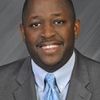Among the greatest challenges we're faced with today, is the growing health divide in underserved communities. Right here in the United States, there are people who have lower life expectancies than populations of many third-world countries. You can find out your own life expectancy -- not through your family history or by visiting your doctor's office, but by looking at something as simple as your address. According to the Centers for Disease Control (CDC), your zip code is a greater indicator of your life expectancy, and has a greater impact on your health, than genetics.
For example, look at the city of Boston. According to U.S. Census data, individuals living in Boston's Roxbury neighborhood have a life expectancy of just 58.9 years -- which is how long the average American lived in the early 1920s. Geography has such a profound impact on health because it determines access to care, services, information and healthy food.
As a cardiologist, I've seen firsthand the impact that location has on underserved communities. According to the CDC, one in two Americans are impacted by chronic diseases. Heart disease and diabetes are two of the top ten causes of death among African Americans and Hispanics face a 66 percent higher risk of diabetes than their white counterparts.
We know that these figures can't be changed overnight, but by working in communities to reach people where they are, I know that we can make a difference. At The Aetna Foundation, we're doing just that by implementing programs in schools, churches in neighborhoods, and in community parks. Through our Go Local program, we're going deep in local communities to help people make sustainable changes to their health -- creating a ripple effect in local communities that need it most.
In Tampa, we're reaching students in underserved communities through the Tampa Heights Junior Civic Association where kids are building urban gardens, learning how to grow healthy fresh fruits and vegetables and bringing that fresh produce to communities where it was once lacking.
In Cleveland, we're supporting Refugee Response, which works with the local refugee community to teach English-language and business skills to refugees who are new to the U.S., and give them the tools they need to grow crops and sell them at the local farmer's market.
We're also working with students in San Antonio, through San Antonio Sports, to provide children in underserved communities an avenue to get involved in sports, access equipment that may otherwise be out of reach, and even learn how to make nutritious snacks to fuel active leisure time in a safe environment.
We all have a role to play in closing the health divide, both on the national and local grassroots levels. Nonprofits, government entities, corporations and even individuals can all make a difference in their own way. By working hand in hand with partners across the country in local communities, we know that we can combat geographic barriers and improve the quality of life for members of our most vulnerable individuals. By working community by community and city block by city block, we can make a difference in closing the health divide.
Learn more by visiting http://www.aetna-foundation.org/.
Purpose@Work is a new series of discussions designed to explore how we can infuse a deep sense of purpose into our work - through our organizations, our people, and our impact in society.
How are you taking purpose to the next level in your workplace? Let us know at PurposePlusProfit@huffingtonpost.com or by tweeting with #PurposeAtWork.
